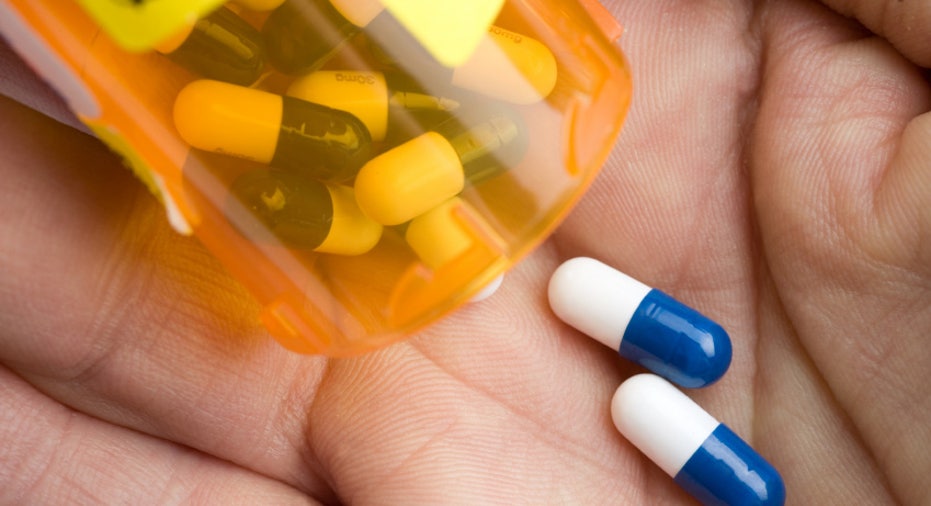More Government Waste Found at Medicare

Medicare is wasting taxpayer dollars due to a faulty law that severely limits the amount of money it can get back in drug rebates, a sign that drug makers still wield a lot of power in negotiations with the taxpayer-backed agency.
The rebate rate at Medicaid is effectively triple the rate of rebates Medicare gets, says a new report to Congress from the Department of Health and Human Services Office of Inspector General.
Blame is placed on Congress for disparities in the law it writes on coverage by the federal, taxpayer-backed health care programs. A federal law restricts Medicare from putting in place a specific rebate structure for its Medicare Part D drugs. This program subsidizes the cost of prescription drugs for taxpayers.
“There are no statutory requirements regarding the amounts of these rebates” for Medicare Part D drugs, whereas Medicaid has “statutorily defined” rebates for “selected brand-name drugs,” including additional rebates when the costs for brand name drugs increase faster than the rate of inflation, the watchdog group says.
An unintended consequence of that glitch, the report says, is that Medicare effectively pays much more, “a substantial margin,” versus the sums Medicaid pays for drug coverage.
The inspector general looked at payouts for 200 brand name drugs that cost Medicare Part D the most. In 2012, Medicare got $10.3 billion in rebates for $66.5 billion worth of drug payouts, a rebate rate of roughly 15%, whereas Medicaid paid out $35.7 billion but received $16.7 billion in rebates, about a 47% rebate rate.
What exactly is going on here? Let’s go to the bureaucratic red tape Congress and federal overseers put in place for Medicare. The inspector general report says: “The law establishing the Part D program expressly prohibits the Secretary of Health and Human Services (Secretary) from interfering in the negotiations between the relevant Part D parties or instituting a price structure for the reimbursement of covered Part D drugs.”
Interfering? There’s more. In fact, “the law establishing the Part D program expressly prohibits the government from instituting a price structure for the reimbursement of covered Part D drugs,” the report says.
In its response to the report, the Centers for Medicare & Medicaid Services essentially chalks it up to the power of the drug lobby. Marilyn Tavenner, administrator for the Centers for Medicare & Medicaid Services, wrote: “Manufacturer rebates under the Medicaid program are defined by statute, whereas similar rebates under the Medicare Part D program are determined solely through negotiations between drug manufacturers and Part D sponsors.” The federal official did say that drug makers are providing discounts on these Part D drug products.
Meanwhile, as Congress and HHS sits back on its heels, there is a lot of mindless paperwork involved. “Every time a beneficiary has a prescription filled under Part D, his or her plan sponsor must submit a summary to [the Centers for Medicare & Medicaid Services] called the prescription drug event (PDE) record. The PDE record contains drug cost, payment, and utilization data that enable CMS to administer the Part D benefit.”
Paperwork, even though rebates are apparently restricted. And even though the real event horizon ignored is the edge of your wallet.
For some reason, Medicaid has a straight forward arrangement. “Drug manufacturers are generally required to enter into rebate agreements with the [HHS] secretary and pay quarterly rebates to [the] states for federal payment to be available for covered outpatient drugs provided under Medicaid,” the report says.
In fact, “as of December 2014, all states and approximately 600 pharmaceutical companies participated in the Medicaid drug rebate program,” the report says. “States invoice manufacturers for the units reimbursed and manufacturers then pay the rebates to the States.”
In a separate watchdog report, the inspector general for the Department of Health and Human Services said the agency repeatedly ignored its recommendation that could have saved taxpayers $251 million in costs at Medicare in an 18-month period studied.
This time, the watchdog looked at Medicare payouts for infusion drugs, the medicine that is pumped through IV drips in hospitals. Medicare pays out based on the wholesale prices, even though the drugs are generally sold for a lot less.
"Under this methodology, providers are being reimbursed for many drugs at double their costs, while recouping only half of their costs for other drugs," the inspector general reported, whereas other drug reimbursements are based on the sale price, plus they are updated every quarter.
The inspector general also indicated it has been advising often the Centers for Medicare and Medicaid to get Congress to change Medicare’s reimbursement schedule for infusion drug coverage, including as recently as February 2013, but so far, apparently nothing has been done.
"If this legislative change had been enacted subsequent to [the inspector general's] recommendation, Medicare expenditures for … infusion drugs could have been reduced by $251 million over 18 months," the watchdog said.